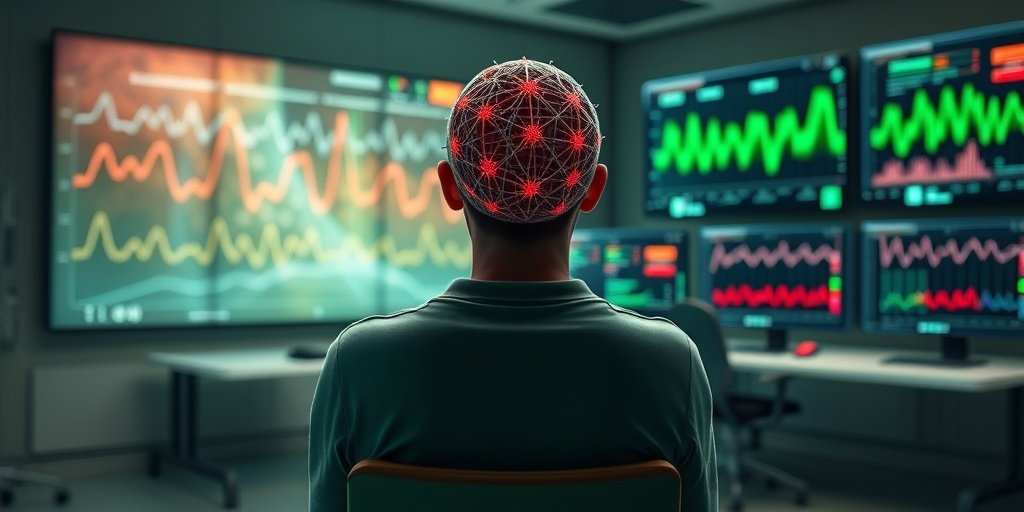⚡ Quick Summary
This study introduces a novel method called MSDI for decoding EEG-based motor imagery (MI) signals, addressing challenges related to spatio-temporal variability and low signal-to-noise ratio (SNR). The proposed method demonstrates state-of-the-art performance on two publicly available datasets, showcasing its superior time efficiency and noise resistance.
🔍 Key Details
- 📊 Datasets: BNCI2014-001 and BNCI2014-004
- 🧩 Features used: EEG signals
- ⚙️ Technology: Multi-scale spatio-temporal domain-invariant representation learning (MSDI)
- 🏆 Performance: State-of-the-art results on both datasets
🔑 Key Takeaways
- 🧠 EEG-based motor imagery is crucial for clinical rehabilitation and virtual reality applications.
- 💡 The MSDI method effectively extracts invariant features from EEG signals.
- 📈 Improved performance was observed in decoding EEG signals compared to traditional methods.
- ⏱️ Time efficiency and noise resistance are significant advantages of the proposed method.
- 🌍 The study contributes to advancements in brain-computer interface technology.
- 🔬 Future applications could enhance rehabilitation strategies and virtual reality experiences.

📚 Background
Electroencephalography (EEG) is a non-invasive technique widely used to monitor brain activity. In recent years, EEG-based motor imagery (MI) has gained traction in clinical rehabilitation and virtual reality environments. However, decoding EEG signals remains a challenge due to their inherent spatio-temporal variability and low signal-to-noise ratio (SNR), which complicates the extraction of reliable features necessary for accurate interpretation.
🗒️ Study
The authors of this study aimed to develop a robust method for decoding EEG-based MI signals. They proposed the multi-scale spatio-temporal domain-invariant representation learning method (MSDI), which decomposes the original EEG signals into spatial and temporal components. By extracting invariant features at multiple scales, the method enhances the reliability of the decoded signals.
📈 Results
The evaluation of the MSDI method on the BNCI2014-001 and BNCI2014-004 datasets revealed state-of-the-art performance. The results indicated that the method not only outperformed existing techniques but also demonstrated superior time efficiency and noise resistance, making it a promising approach for future applications in EEG signal decoding.
🌍 Impact and Implications
The findings from this study have significant implications for the fields of clinical rehabilitation and brain-computer interfaces. By improving the accuracy and reliability of EEG-based MI decoding, the MSDI method could enhance rehabilitation strategies for patients recovering from neurological conditions. Additionally, its application in virtual reality could lead to more immersive and responsive experiences, paving the way for innovative therapeutic interventions.
🔮 Conclusion
This study highlights the potential of the MSDI method in advancing EEG-based motor imagery decoding. By addressing the challenges of spatio-temporal variability and low SNR, the method opens new avenues for research and application in both clinical and technological domains. Continued exploration in this area could lead to transformative changes in how we interact with and utilize brain-computer interfaces.
💬 Your comments
What are your thoughts on the advancements in EEG-based motor imagery decoding? We would love to hear your insights! 💬 Leave your comments below or connect with us on social media:
Feature-aware domain invariant representation learning for EEG motor imagery decoding.
Abstract
Electroencephalography (EEG)-based motor imagery (MI) is extensively utilized in clinical rehabilitation and virtual reality-based movement control. Decoding EEG-based MI signals is challenging because of the inherent spatio-temporal variability of the original signal representation, coupled with a low signal-to-noise ratio (SNR), which impedes the extraction of clean and robust features. To address this issue, we propose a multi-scale spatio-temporal domain-invariant representation learning method, termed MSDI. By decomposing the original signal into spatial and temporal components, the proposed method extracts invariant features at multiple scales from both components. To further constrain the representation to invariant domains, we introduce a feature-aware shift operation that resamples the representation based on its feature statistics and feature measure, thereby projecting the features into a domain-invariant space. We evaluate our proposed method via two publicly available datasets, BNCI2014-001 and BNCI2014-004, demonstrating state-of-the-art performance on both datasets. Furthermore, our method exhibits superior time efficiency and noise resistance.
Author: [‘Li J’, ‘Shi J’, ‘Yu P’, ‘Yan X’, ‘Lin Y’]
Journal: Sci Rep
Citation: Li J, et al. Feature-aware domain invariant representation learning for EEG motor imagery decoding. Feature-aware domain invariant representation learning for EEG motor imagery decoding. 2025; 15:10664. doi: 10.1038/s41598-025-95178-5